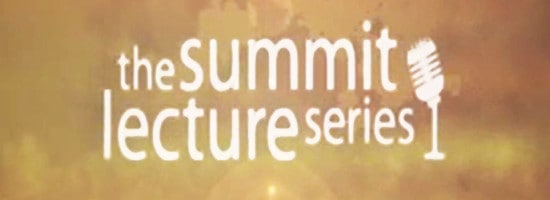
To purchase the entire Summit Lecture Series, Vol. 1 on DVD, go to: summit.org.
Ideas really matter.
Ideas have consequences.
Ideas have stories.
There are actually a handful of different stories (or worldviews) that are all vying for our hearts and minds they are:
- Secular Humanism
- Christianity
- Marxism
- Leninism
- Postmodernism
- Cosmic Humanism
- Islam
Ideas have feet.
And finally, ideas have families.
What I mean by this is that ideas often stem from other ideas, similar to a family tree.
All worldviews make a statement regarding ultimate reality. They all answer the question: What is really real? Or, in other words: Which world do we actually live in? Do we live in a world in which God exists and therefore morality exists? Or, do we live in a world in which these things do not exist?
Now, five of the above worldviews say that ultimate reality is “knowable”, and we can actually access these realities. Ultimately, we can know something about reality according to these five.
However, they disagree regarding exactly what ultimate reality is.
For example, Secular Humanism and Marxism say that ultimate reality is knowable and it is only physical. According to these two, ultimate reality only consists of what we can see, touch, taste, smell or hear. But, Cosmic Humanism says the opposite – ultimate reality is knowable, but it is spiritual. According to Secular Humanism and Marxism, spirituality is nothing more than an illusion. However, Cosmic Humanism views physicality as an illusion.
Christianity and Islam are both theistic worldviews that say that ultimate reality is knowable because it is made by God and God created the world – both physical AND spiritual.
These dividing lines make HUGE differences.
Take, for instance, the question of what it means to be a human being.
Secular Humanists and Marxists believe that humans are little more than their bodies. Cosmic Humanists believe that human beings are actually their spirits and their bodies are not “real”. Muslims and Christians believe that human beings are both the bodies AND their spirits.

Now, how an individual defines things like “what it means to be a human being” also determines the definition of things like psychology (how do you fix a human being); or sociology (how do you arrange human beings together in society).
These sorts of ideas about what it means to be human have meaningful consequences when we set up social structures and institutions.
Now, you may have noticed that Postmodernism doesn’t fit amongst these other worldviews in this context. Postmodernism is actually on a family tree all of its own. You see, unlike the other worldviews, Postmodernism begins with the assumption that we cannot know reality, because everything within reality is merely a social construct.
Now, among the worldviews that view reality as ONLY physical – Secular Humanism and Marxism – these are known as Naturalistic Worldviews. Naturalistic Worldviews also eliminated God from the picture entirely. According to them, we also live in a world without any other gods, spirits, ghosts, demons, or anything else that is non-physical.
Probably the clearest way to sum up this family of worldviews comes from cosmologist Carl Sagan:
“The cosmos is all there is, all there ever was, and there ever will be.”
That is a very clear statement about the sort of world that Mr. Sagan thought that we live in. However, it is not a scientific statement. Unlike science, the assertions of this statement cannot be observed nor tested.
“The statements constituting a scientific explanation must be capable of empirical test.”
-Carl Hempel
In order to test this, the examiner would have to be in all places at all times at the same time in order to observe the entire cosmos. What’s interesting is that the only being who can pull off this observation is God, and if God is real, then Mr. Sagan’s statement is false.
In other words, the only way to scientifically prove his statement is to prove it to be false.
And, if it is not a scientific statement, then it is a philosophical one.
Now, all worldviews begin with assumptions about two things: philosophy and theology. Carl Sagan’s statement is philosophical by nature, and it is also a statement about God. You see, if what he had to say about the cosmos being all that there is, then God does not exist.
So, the philosophy behind Secular Humanism and Marxism is Naturalism. Naturalism answers the question, “What is real” with the answer “Only the physical world”. When we observe a human being – even under a microscope, MRI, or X-Ray, we see tissue, water, blood and bones, but we cannot see a soul.
So, according to Naturalism, the human soul does not exist.
Nature exists – what we can see, touch, taste, hear, or smell – and nothing else.